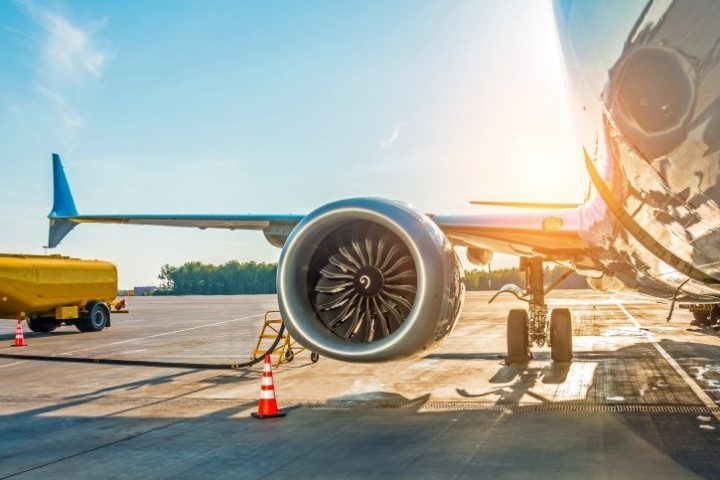Aviation industry considers bill for hydrogen upgrades

The EU aviation sector is gearing up to roll out electric and hydrogen planes, which manufacturers predict will hit markets by 2035. But who should pay for the costly infrastructure upgrades needed to service these aircraft is a controversial question for the industry.
While electric aircraft are not expected to need major infrastructural changes to recharge, hydrogen production, transport, and storage pose a more significant challenge.
Hydrogen must be kept at extremely low temperatures to remain in liquid form: around -252 degrees Celsius. It is also more voluminous than kerosene, meaning sizeable storage facilities will be necessary.
For e-planes, the recharging proposition is more straightforward: In addition to electric charging connections, airports will likely store batteries on-site, allowing airlines to swap out the spent battery for a charged one immediately, shortening turnaround time.
These storage demands come on top of the capacity needed to house kerosene and EU-mandated green jet fuels, which will still be in use up to 2050 at least.
The total cost for refurbishing airports across the bloc is expected to run into the billions.
EU lawmakers have proven hesitant to propose binding hydrogen and electric charging facility targets for airports, given the lack of certainty over how the technology will develop. Instead, they have left it to member states to develop their own infrastructure plans for clean aviation.
Splitting the bill
The degree to which taxpayers, airports, fuel producers, aircraft manufacturers, and airlines should shoulder the cost of upgrades is an open debate.
The airline lobby group A4E has floated the idea of using funds from the EU’s Connecting Europe Facility, which supports cross-border transport connections in the bloc. However, it remains to be seen if this will win political support.
While airports are obvious candidates to put up the necessary capital expenditure, airlines are pushing for greater regulatory oversight of investments, fearing that airport charges will increase significantly.
Plane operators currently pay to use airports through take-off and landing charges, which are regulated under the EU’s Airport Charges Directive. But an expensive infrastructure upgrade will inevitably increase costs as the airport seeks to recoup its investment.
“The Airport Charges Directive in its current form doesn’t really have enough teeth to make sure that these investments are scrutinised, sized and costed properly. And you could end up in a situation where large costs are passed on to airlines and by extension to passengers through airport charges,” an A4E spokesperson told EURACTIV.
In emailed comments, ACI Europe, a major trade association representing airports, told EURACTIV that industry investments should be supported through incentives, with risk reduced through “consistent and stable” policies.
The spokesperson added that a “wide-ranging conversation” is needed with aviation stakeholders to ensure the right policy measures are put in place to make hydrogen-powered flight a reality.
Airbus, the world’s largest aircraft manufacturer, has pledged to bring a hydrogen-powered aircraft to market by the middle of the 2030s.
The Toulouse-based manufacturer told EURACTIV that it sees itself a “facilitator” of the move to hydrogen. The company has already signed a number of agreements with aviation industry players – from engineering companies to hydrogen producers – to prepare for the introduction of the novel aircraft.
This includes a memorandum of association with ACI Europe, signed in June, to collaborate on the technical standards for the new charging and refuelling infrastructure.
“We want to bring together all the key players around the same table to ensure we have the necessary infrastructure in place to bring our zero-emission aircraft to market by 2035,” an Airbus spokesperson told EURACTIV.
Earlier this year, airbus announced plans to trial a hydrogen-powered jet engine by 2026. By 2028, airlines will be able to make a down payment to acquire them. And by 2050, it is foreseen that some 75% of aircraft globally will use the clean technology currently under development.

